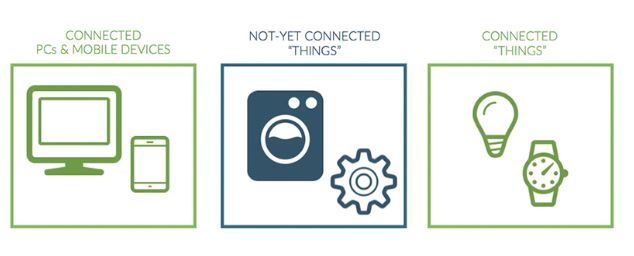No customer left behind: Supporting the unconnected in the Internet of Things age

Peter Zeinoun, director of Products, LogMeIn
The rise of connected devices has been described by some as the next Industrial Revolution. This new age of connectivity is expected to permeate every part of our lives, changing how we live and work in ways that we can scarcely imagine.
Gartner, for example, has predicted that there will be 20.8 billion connected devices by 2020 and it is this expected growth that is fuelling a lot of the excitement surrounding the Internet of Things.
As the IoT continues to evolve, the approach to supporting these devices and other devices in the ecosystem is evolving along with it. New support approaches are emerging thanks to the constant stream of data connected devices can provide to support agents, says Peter Zeinoun, director of Products, LogMeIn.
For example, if a device sends a message that it is offline, the support team can restart the device or push out an update to fix the problem – likely before the owner even knows there is an issue. This new kind of proactive support enables problem solving without causing significant disruption to the user experience.
While the idea around Support of Things is really exciting and will affect nearly all companies soon enough, the reality is that most of us are still relying mostly on our offline or not-yet-connected devices for our everyday lives. While planning for a connected world is imperative and should be happening now, companies still need to offer support for these non-connected devices and likely will need to for quite some time.
While the IoT has shown us what is possible for the future of customer support (and some have even begun practicing it), there still a huge disparity in the support experience of connected and not-yet-connected product customers.
Many traditional product companies are still relying on email or phone-based support – which often times are not the practical options for more complicated support needs. Resetting a password? Sure. Configuring a new computer? Not so much. Traditional support channels like these often rely on the untrained eye of the user to be able to adequately explain the issue at hand. The more complicated the issue, the higher the likelihood the user might not be able to accurately describe it to the support agent.
While phone and email have served us well for a while, the world is changing. Much of the disparity is technology based – it’s easier to provide proactive support when you have access to a consistent data stream – but for those still depending on conventional products, the support experience should be as streamlined and top notch as possible. Especially as consumers who are experiencing these new support engagements first hand, begin to raise their expectations across the board.
So how do you do that? Omni-channel engagement solutions that can tie in various communication channels – including email, social, live chat, video, etc. — to track the customer’s entire journey helps support teams know the history of the incident and what work had already been done.
Connecting their journey in a seamless way helps ensure customers don’t need to repeat themselves as issues get escalated. Video-aided support tools are another great example. These solutions provide support agents with a way to see what the customer is seeing as if they were physically with them — ensuring a more accurate view of the problem and a much quicker resolution.
These types of tools not only help solve issues faster, but have also shown to reduce product returns attributed to ‘no fault found’, as support teams are able to better help customers with initial set-up to ensure the product is working properly out of the box.
Artificial intelligence is also emerging as another tool for support teams. AI can be used to help automate certain aspects of customer service so that users can get quick answers to more straightforward questions without waiting for an agent.
There is no denying that the IoT will usher in a new and exciting era for customer engagement and support, but the key is to recognise, that regardless of the device, customers expect seamless, drama-free support. Companies looking to differentiate through customer support need to build their customer journey around this core value to make certain no customer gets left behind.
The author of this blog is Peter Zeinoun, director of Products, LogMeIn
Comment on this article below or via Twitter @IoTGN
